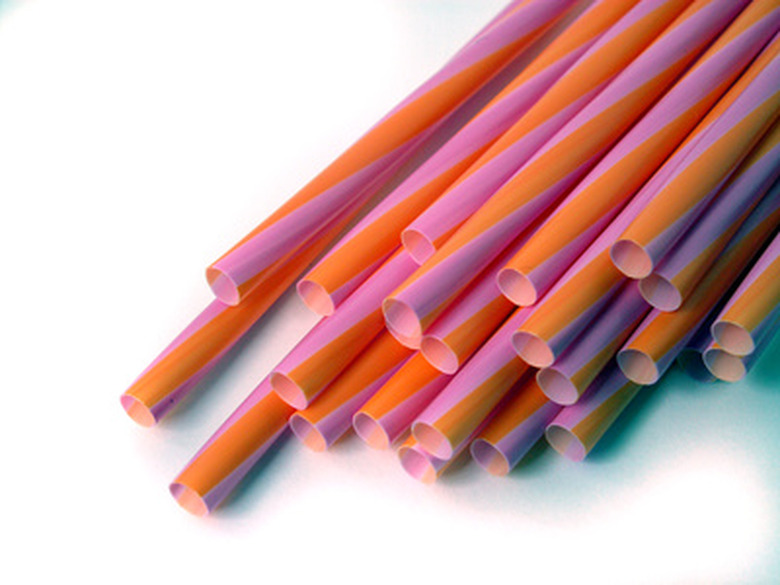Science Projects With Straws
Regular plastic drinking straws can provide endless tutorials in the principles of physics. While most projects with straws somehow involve water or balloons, the lessons illustrate the power and properties of air. While supervision over the straw-in-the-potato project is recommended, most science experiments with straws can be carried out worry-free by grade school kids.
The Force of Air
The Force of Air
Demonstrate the force of air by stabbing a plastic drinking straw through a raw potato. Make an airtight seal with your thumb on one end of the straw. Be careful to hold one end of the potato and impale it at the other end to so the straw won't hit your hand. With the airtight seal under your thumb, the air molecules inside the straw condense and give the stabbing straw enough sturdiness to go through the raw potato, removing a cylindrical skewer of potato in the process. This can be a risky experiment for those with poor aim, according to Steve Spangler Science, as a plunging, sealed straw could potentially break the skin.
Straws and Balloons
Straws and Balloons
There are numerous science projects involving balloons and straws, most of which are lessons in air's propulsion ability. One such project requires a balloon, a flexible drinking straw, cut off an inch below (not above) the bendy portion, and a rubber band. Insert the one-inch portion of straw below the bend into the balloon, and securely fasten them together with a rubber band, without crushing the straw. The bendable portion should be outside of the balloon. Inflate it through the straw. Place a finger over the end of the straw to prevent air from escaping, and then set on the floor, keeping the bendable portion of the straw straight. Let it go and watch the direction of the balloon's movement. Bernie Zubrowski, author of "Balloons—Building and Experimenting with Inflatable Toys" writes that if you bend the straw in a different direction each time, the balloon will also go in different directions. Try it with larger balloons, or balloons with different shapes to see how the experiment changes.
Air Pressure and Water
Air Pressure and Water
Take a clean, lidded jar and make a hole in the lid just large enough to put a straw through. Fill the jar with water, and screw the lid onto the jar. Put a straw through the hole you made in the lid, and make sure the hole is airtight by putting plasticine or modeling clay over the hole surrounding the straw. As long as there's no air escaping, you shouldn't be able to suck any water through the straw, according to the child science experiments written on by parentingtoddlers.com. Place another drinking straw in a regular, open glass of water and see another version of the same idea: make an airtight seal over the open end of the straw with your thumb and lift the straw out of the glass of water. Notice that the straw holds water to the same height on the straw as the height of the water in the glass. It's the air pressure in the top of the straw that holds the water in from the bottom of the straw. Once the thumb seal is broken, the water spills out.
References
- Parenting Toddlers: Child Science Experiments.
- "Balloons—Building and Experimenting with Inflatable Toys"; Bernie Zubrowski; 1990
Cite This Article
MLA
Campbell, Meg. "Science Projects With Straws" sciencing.com, https://www.sciencing.com/science-projects-straws-6384555/. 24 April 2017.
APA
Campbell, Meg. (2017, April 24). Science Projects With Straws. sciencing.com. Retrieved from https://www.sciencing.com/science-projects-straws-6384555/
Chicago
Campbell, Meg. Science Projects With Straws last modified August 30, 2022. https://www.sciencing.com/science-projects-straws-6384555/
